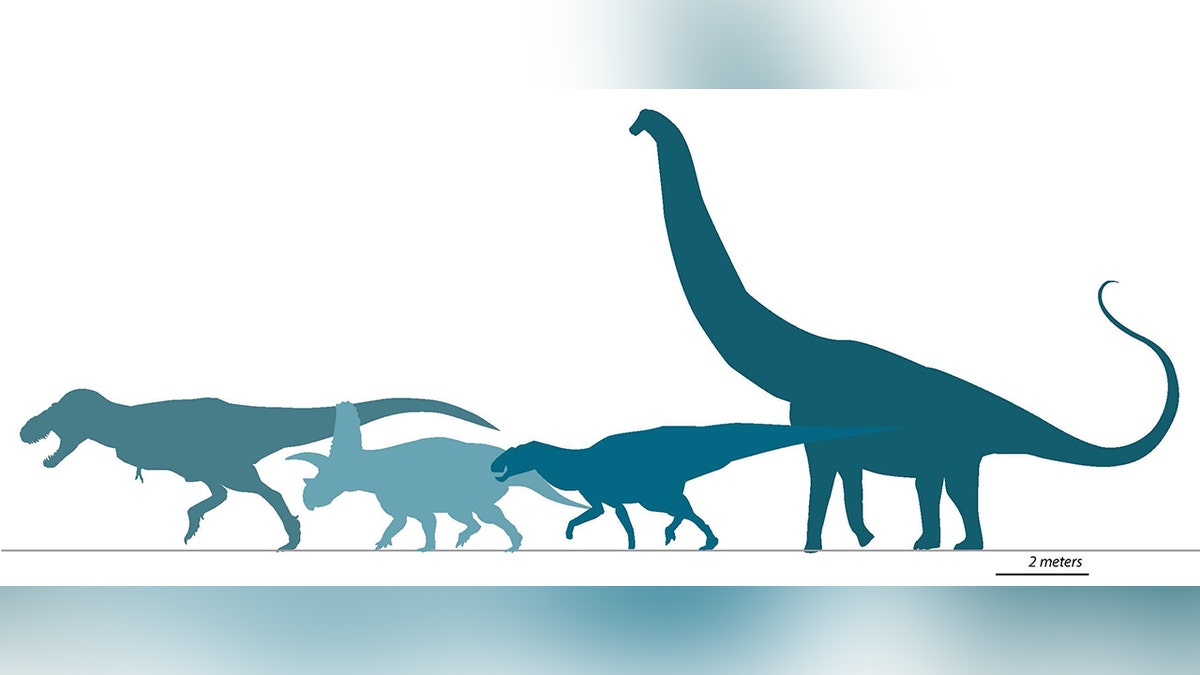The discovery of a new subspecies of dinosaur believed to be a more primitive and ancient relative of Tyrannosaurus rex reshapes scientists' understanding of Tyrannosaurus rex, a team of researchers including the New Mexico Museum of Natural History and Science (NMMNHS) said. How and when did the monster first reach North America?
In a study published in the journal Scientific Reports, the team identified a newly discovered subspecies known as Tyrannosaurus mcraeensis, a predator that turned out to be older and more primitive than Tyrannosaurus, and about the same size.
The discovery of a partial skull found years ago in western New Mexico led to the study, which showed that Tyrannosaurus existed in North America millions of years before paleontologists previously believed.
“New Mexicans have always known that our state is special, and now we know that New Mexico has been a special place for tens of millions of years,” said Dr. Anthony Fiorello, Executive Director of NMMNHS. “This study fulfills the mission of this museum through science-based investigation of the history of life on our planet.”
What we thought we knew about T. rex was wrong, say researchers in a new study
Rendering by artist Sergei Krasovky of Tyrannosaurus mcraeensis, a newly discovered relative of T. rex. The partial skull on display at the New Mexico Museum of Natural History and Science was a key part of the discovery. (Courtesy of NMMNHS/Sergey Krasovki)
Besides NMMNHS, researchers from the University of Bath (UK), the University of Utah, George Washington University, the University of Harrisburg, Pennsylvania State University Lehigh Valley, and the University of Alberta participated in the study.
T. rex, perhaps the largest and most dangerous terrestrial predator ever, “suddenly appeared” in North America about 66 million years ago, the museum said in a press release.
When it arrived, there were no close relatives of T. rex in North America, so how it arrived and evolved there is a mystery, the press release noted.
Dinosaurs may have been killed by 'apocalyptic dust plume': study

A diagram showing the size of the newly discovered dinosaur Tyrannosaurus mcraeensis. Tyrannosaurus was roughly the same size as its famous relative, T. rex. (Courtesy of NMMNHS)
Co-author Sebastian Dammann was a student in 2013, when he began re-examining species collected from southern New Mexico.
“We quickly began to suspect that we were headed toward something new,” he said in the press release.
What he and other researchers learned was that T. mcraeensis was about the same size as T. rex and also ate meat.
Early mammals may have hunted dinosaurs, suggesting rare fossils in China

The jawbone of Tyrannosaurus mcraeensis, a newly discovered relative of T. rex. (Courtesy of NMMNHS)
The research also showed that subtle differences in the jaw bones make it unlikely that tyrannosaurs were a direct ancestor, but it raises the possibility that there will be more discoveries about tyrannosaurs.
“Once again, the extent and scientific importance of New Mexico's dinosaur fossils becomes clear – many new dinosaurs remain to be discovered in the state, both in rocks and in museum drawers!” said Dr. Spencer Lucas, Curator of Paleontology at NMMNHS.
CLICK HERE TO GET THE FOX NEWS APP
The discovery also expands researchers' understanding of dinosaur species, suggesting that the dinosaur lived in what is now the southern United States at least 72 million years ago, and likely originated there before moving to the western part of North America.

“Infuriatingly humble alcohol fanatic. Unapologetic beer practitioner. Analyst.”
